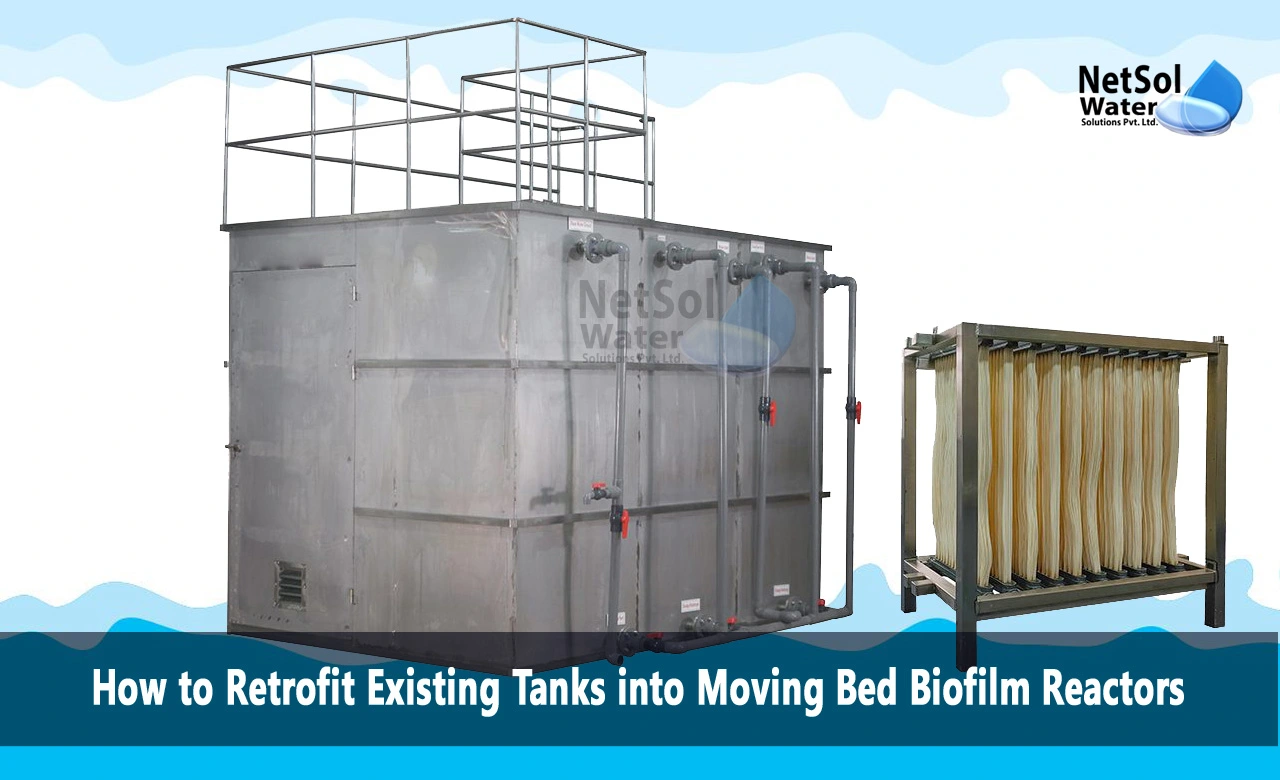How to Retrofit Existing Tanks into Moving Bed Biofilm Reactors?
Moving bed biofilm reactors (MBBRs) are a type of wastewater treatment system that utilize biofilm grown on small plastic carriers that move along with the water flow in the reactor. They are an increasingly popular technology for upgrading and retrofitting existing tanks and basins to increase treatment capacity and efficiency. Retrofitting existing infrastructure with MBBRs can be a cost-effective way to meet more stringent discharge limits without requiring construction of new tanks. The key considerations when retrofitting existing tanks or basins into MBBR systems.
Key considerations when retrofitting existing tanks into MBBR systems
1- Carrier Media Selection
A critical design aspect is selecting appropriate MBBR carrier media. The media provides surface area for biofilm growth and must remain in constant motion within the reactor. Typical carrier elements are made of high-density polyethylene or polypropylene in various shapes such as cylinders, squares, rings, or panels. The goal is to maximize protected surface area and void space while minimizing carrier weight. Carrier size ranges from 6-12 mm for typical municipal wastewater applications. Carrier filling fraction, or the percentage of the reactor volume occupied by media, is typically around 30-50%. Higher filling allows more biomass but can increase headloss. Media with neutral buoyancy is generally preferred to avoid accumulation.
2- Hydraulic Design Considerations
Existing tanks must be assessed to determine if sufficient hydraulic capacity exists to allow carrier motion and prevent settling. Tanks should be modeled to simulate flow patterns and dead zones. Installation of mixers or aerators may be needed to induce full-depth circulation. Headloss through MBBRs is higher than conventional activated sludge and impacts pumping needs. Tank inlets and outlets may need modification to promote plug flow and prevent short-circuiting. Adequate freeboard must be provided to avoid media washout.
3- Aeration Design
Most MBBRs are designed as completely mixed aerated systems. Oxygen is needed for biological degradation and also generates mixing energy to fluidize and circulate carriers. Aeration systems must be designed to provide optimal dissolved oxygen levels throughout the tank depth. Fine bubble diffused aeration is most common, usually with diffusers placed along the tank bottom. Blowers need to supply sufficient air flow for both biological demand and mixing energy.
4- Integrating MBBRs with Existing Infrastructure
There are several options for integrating MBBRs with existing primary clarifiers, aeration basins, and secondary clarifiers. MBBRs can be installed in existing aeration tanks or as a sidestream treatment. They can also be used as a tertiary process for nutrient removal or final polishing. Flow equalization and staging with existing basins should be considered. Piping modifications and new pumps may be needed to split flows. The system should be modeled as a whole to size MBBR units and optimize the treatment train configuration
5- Instrumentation and Controls
Additional instrumentation should be provided to monitor MBBR performance. Online sensors for dissolved oxygen, pH, ORP, suspended solids and flowmeters are recommended. Variable speed drives on blowers allow air flow control in response to demand. Carrier media should be monitored for settlement, fouling or washout. Level sensors can trigger alarms or automatic addition of fresh media. A programmable logic controller and SCADA system should integrate MBBR monitoring and controls.
Conclusion
Retrofitting existing tanks and basins into MBBR systems can boost treatment capacity and efficiency. Careful attention must be given to carrier media selection, hydraulic design modifications, aeration system upgrades, integration with existing infrastructure, and instrumentation and controls. With proper engineering design, MBBRs can offer an attractive retrofit option for aging wastewater treatment facilities looking to meet more stringent effluent requirements within limited space and budgets.
Do you need an advice or assistance on selecting the best water and wastewater treatment unit? We have solutions for all your problems!
Let us know your problem, our experts will make sure that it goes away.
For an assistance or related query,
Call on +91-965-060-8473 Or write us at enquiry@netsolwater.com



